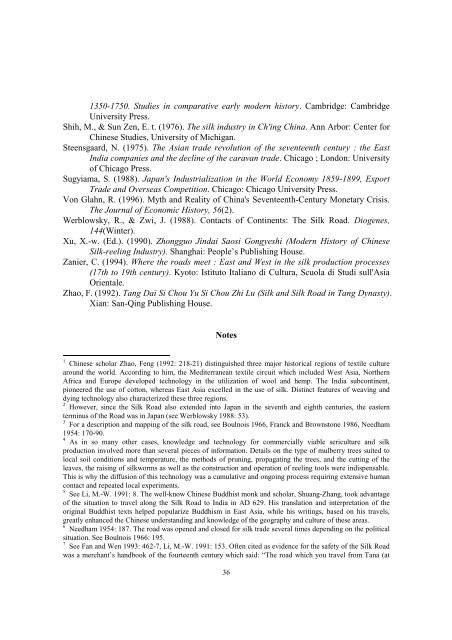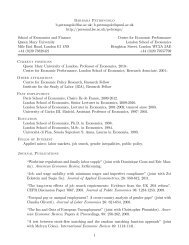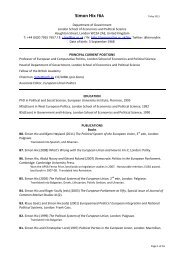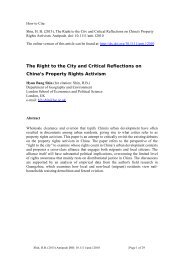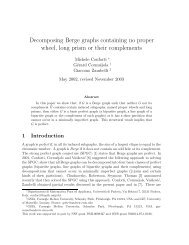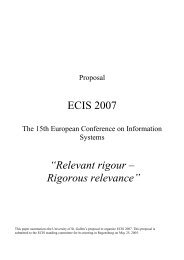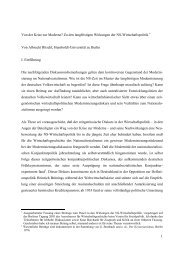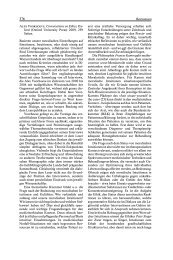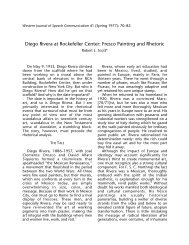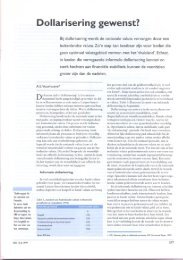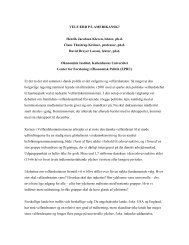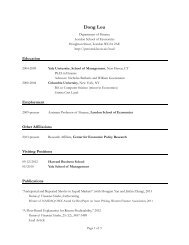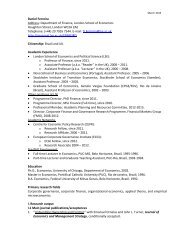Reference: MA, Debin. “The Great Silk Exchange: How the World ...
Reference: MA, Debin. “The Great Silk Exchange: How the World ...
Reference: MA, Debin. “The Great Silk Exchange: How the World ...
You also want an ePaper? Increase the reach of your titles
YUMPU automatically turns print PDFs into web optimized ePapers that Google loves.
1350-1750. Studies in comparative early modern history. Cambridge: Cambridge<br />
University Press.<br />
Shih, M., & Sun Zen, E. t. (1976). The silk industry in Ch'ing China. Ann Arbor: Center for<br />
Chinese Studies, University of Michigan.<br />
Steensgaard, N. (1975). The Asian trade revolution of <strong>the</strong> seventeenth century : <strong>the</strong> East<br />
India companies and <strong>the</strong> decline of <strong>the</strong> caravan trade. Chicago ; London: University<br />
of Chicago Press.<br />
Sugyiama, S. (1988). Japan's Industrialization in <strong>the</strong> <strong>World</strong> Economy 1859-1899, Export<br />
Trade and Overseas Competition. Chicago: Chicago University Press.<br />
Von Glahn, R. (1996). Myth and Reality of China's Seventeenth-Century Monetary Crisis.<br />
The Journal of Economic History, 56(2).<br />
Werblowsky, R., & Zwi, J. (1988). Contacts of Continents: The <strong>Silk</strong> Road. Diogenes,<br />
144(Winter).<br />
Xu, X.-w. (Ed.). (1990). Zhongguo Jindai Saosi Gongyeshi (Modern History of Chinese<br />
<strong>Silk</strong>-reeling Industry). Shanghai: People’s Publishing House.<br />
Zanier, C. (1994). Where <strong>the</strong> roads meet : East and West in <strong>the</strong> silk production processes<br />
(17th to 19th century). Kyoto: Istituto Italiano di Cultura, Scuola di Studi sull'Asia<br />
Orientale.<br />
Zhao, F. (1992). Tang Dai Si Chou Yu Si Chou Zhi Lu (<strong>Silk</strong> and <strong>Silk</strong> Road in Tang Dynasty).<br />
Xian: San-Qing Publishing House.<br />
Notes<br />
1 Chinese scholar Zhao, Feng (1992: 218-21) distinguished three major historical regions of textile culture<br />
around <strong>the</strong> world. According to him, <strong>the</strong> Mediterranean textile circuit which included West Asia, Nor<strong>the</strong>rn<br />
Africa and Europe developed technology in <strong>the</strong> utilization of wool and hemp. The India subcontinent,<br />
pioneered <strong>the</strong> use of cotton, whereas East Asia excelled in <strong>the</strong> use of silk. Distinct features of weaving and<br />
dying technology also characterized <strong>the</strong>se three regions.<br />
2 <strong>How</strong>ever, since <strong>the</strong> <strong>Silk</strong> Road also extended into Japan in <strong>the</strong> seventh and eighth centuries, <strong>the</strong> eastern<br />
terminus of <strong>the</strong> Road was in Japan (see Werblowsky 1988: 53).<br />
3 For a description and mapping of <strong>the</strong> silk road, see Boulnois 1966, Franck and Brownstone 1986, Needham<br />
1954: 170-90.<br />
4 As in so many o<strong>the</strong>r cases, knowledge and technology for commercially viable sericulture and silk<br />
production involved more than several pieces of information. Details on <strong>the</strong> type of mulberry trees suited to<br />
local soil conditions and temperature, <strong>the</strong> methods of pruning, propagating <strong>the</strong> trees, and <strong>the</strong> cutting of <strong>the</strong><br />
leaves, <strong>the</strong> raising of silkworms as well as <strong>the</strong> construction and operation of reeling tools were indispensable.<br />
This is why <strong>the</strong> diffusion of this technology was a cumulative and ongoing process requiring extensive human<br />
contact and repeated local experiments.<br />
5 See Li, M.-W. 1991: 8. The well-know Chinese Buddhist monk and scholar, Shuang-Zhang, took advantage<br />
of <strong>the</strong> situation to travel along <strong>the</strong> <strong>Silk</strong> Road to India in AD 629. His translation and interpretation of <strong>the</strong><br />
original Buddhist texts helped popularize Buddhism in East Asia, while his writings, based on his travels,<br />
greatly enhanced <strong>the</strong> Chinese understanding and knowledge of <strong>the</strong> geography and culture of <strong>the</strong>se areas.<br />
6 Needham 1954: 187. The road was opened and closed for silk trade several times depending on <strong>the</strong> political<br />
situation. See Boulnois 1966: 195.<br />
7 See Fan and Wen 1993: 462-7, Li, M.-W. 1991: 153. Often cited as evidence for <strong>the</strong> safety of <strong>the</strong> <strong>Silk</strong> Road<br />
was a merchant’s handbook of <strong>the</strong> fourteenth century which said: <strong>“The</strong> road which you travel from Tana (at<br />
36


